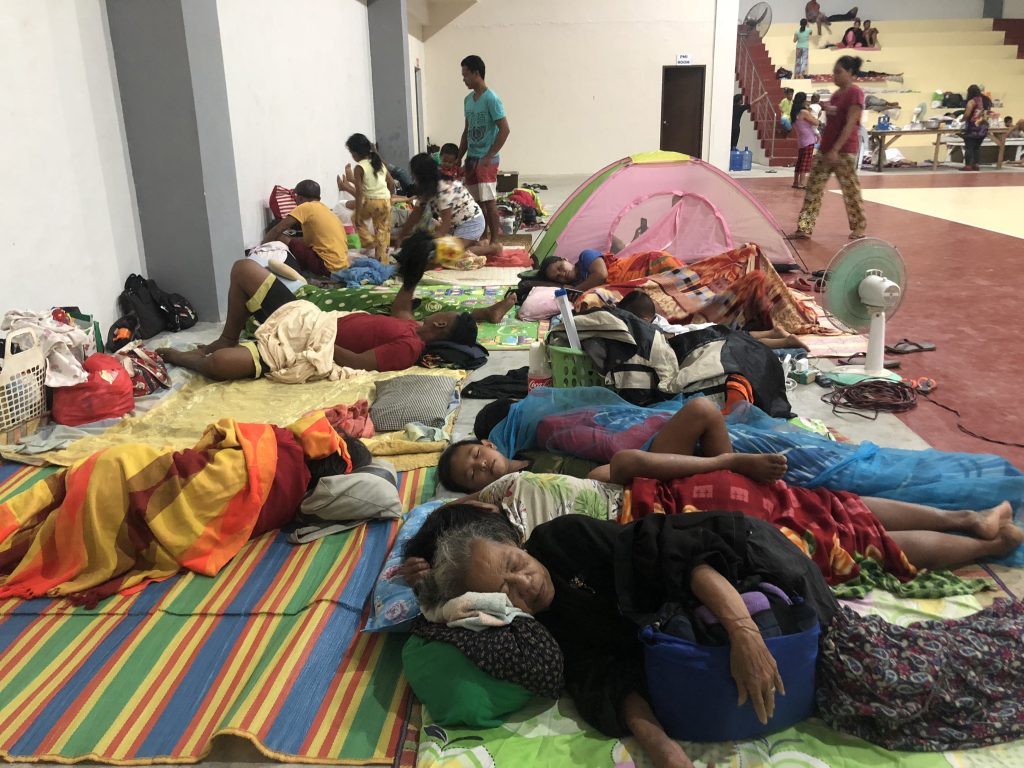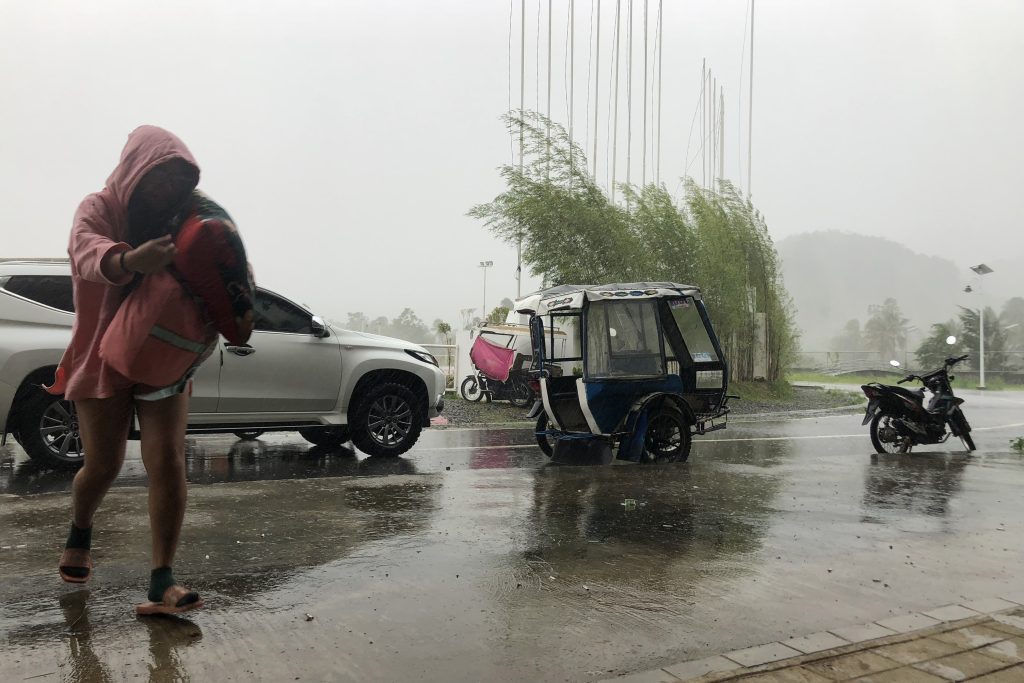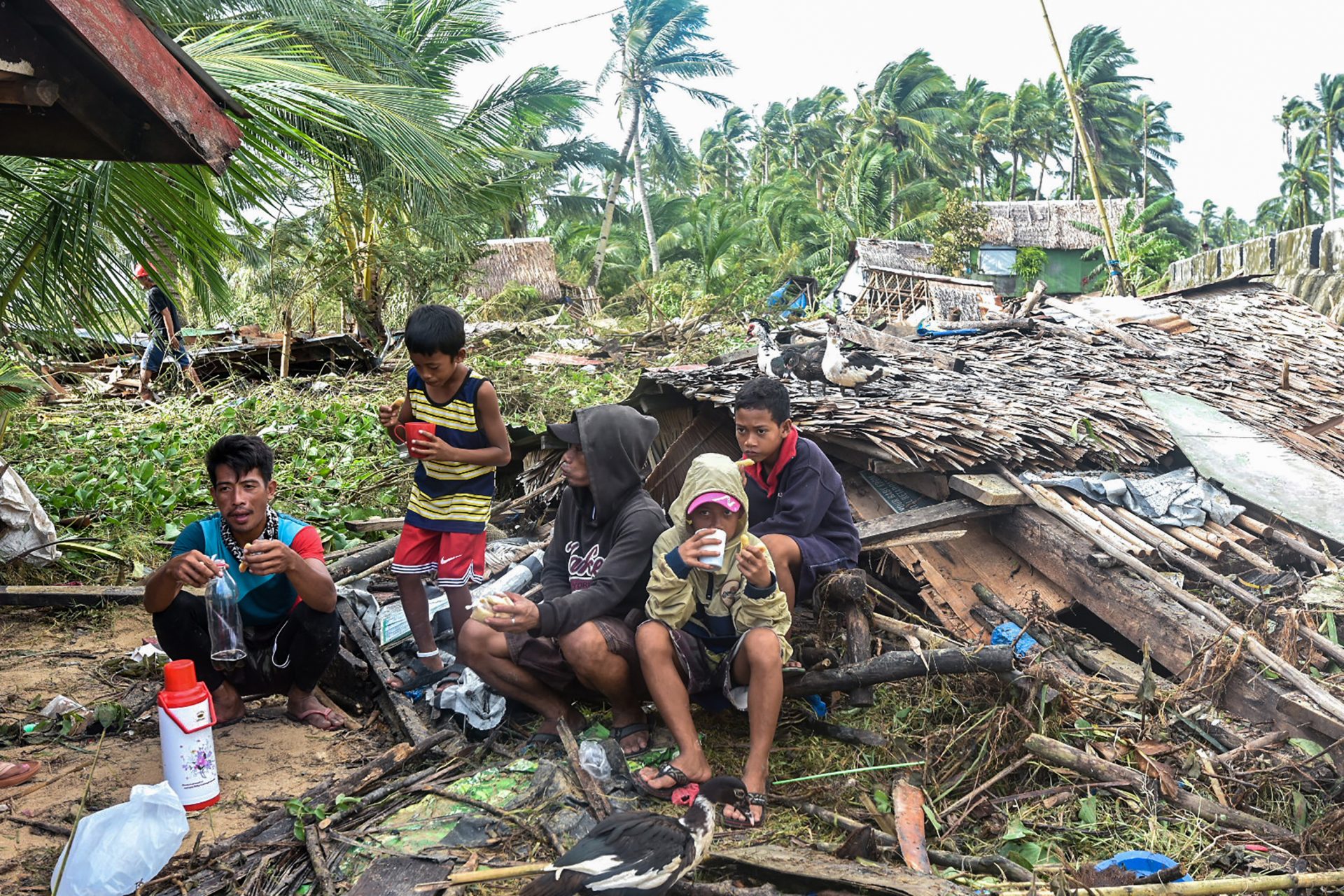At least one person has been reported dead and up to 300,000 people were evacuated as Typhoon Rai (local name: Odette) crossed the Philippine archipelago on Friday, December 17.
Strong winds and heavy rains uprooted trees, toppled power lines and flooded villages as Rai barreled across the country, leaving buildings roofless.
Communication and power lines in the southern and central Philippines have been knocked out.
“We are seeing people walking in the streets, many of them shell-shocked,” ABS-CBN correspondent Dennis Datu reported from the hard-hit city of Surigao on the southern island of Mindanao.
“All buildings sustained heavy damage, including the provincial disaster office. It looks like it’s been hit by a bomb.”
Datu said the main roads leading into the coastal city had been cut off by landslides, fallen trees and toppled power poles.
The national disaster agency confirmed one person had been killed and two others injured in the storm, which was heading towards the popular tourist destination of Palawan island.
More than 300,000 people had sought emergency shelter as the typhoon charged across the Pacific Ocean and smashed into the country, the agency said. About 18,000 had yet to return home.
The Philippine National Police reported that 50,219 families or 198,417 individuals have been evacuated in Mimaropa (Region 4B), Bicol (Region 5), Western Visayas (Region 6), Central Visayas (Region 7), Eastern Visayas (Region 8), Northern Mindanao (Region 10), and Caraga (Region 13).
Police disaster response units also rescued 16 persons in Eastern Visayas and 23 others in Northern Mindanao during 33 separate operations.
“The PNP has fielded 3,649 police disaster response personnel to affected areas and made available a 7,335-strong standby support force for rapid deployment in case of further contingency,” said police Chief Gen. Dionardo Carlos.

Surigao City Mayor Ernesto Matugas told ABS-CBN that Rai ravaged the city of about 170,000 people for several hours, causing “severe” damage.
“The wind was very strong,” Matugas said. “Everything sustained damage — roofs blown off, access roads blocked by landslides.”
Scores of flights were canceled across the country and dozens of ports temporarily closed as the weather bureau warned several-meter-high storm surges could cause “life-threatening flooding” in low-lying coastal areas.
“The devastation is hard to explain,” said Joel Darunday, 37, a tour operator in the central island province of Bohol, who was hunkered down at home with his family when the storm ripped off the roof.
“It was very strong. The last time I experienced something like this was back in the 1980s.”

Clean-up begins
People in the central city of Cebu cleared fallen trees, branches and debris from roads as clean-up efforts got under way.
Verified photos taken in nearby Lapu-Lapu city showed roadside buildings flattened by the storm, while sheets of corrugated iron roofing and branches littered streets.
A building and gym belonging to the Philippine Red Cross in the central province of Southern Leyte were badly damaged, with part of the roof torn off, photos posted by the organization on Twitter showed.
Rai is hitting the Philippines late in the typhoon season, with most cyclones developing between July and October.
Scientists have long warned that typhoons are becoming more powerful, and strengthening more rapidly, as the world becomes warmer because of human-driven climate change.
A super typhoon is the equivalent of a category five hurricane in the United States.
The Earth tends to experience around five storms of that power a year.
Rai was moving across the Visayas region towards Palawan on Friday and was expected to emerge Saturday over the South China Sea, heading toward Vietnam.
The Philippines — ranked as one of the world’s most vulnerable countries to the impacts of climate change — is hit by an average of 20 storms and typhoons every year, which typically wipe out harvests, homes and infrastructure in already impoverished areas.
The deadliest cyclone on record in the Philippines was Super Typhoon Haiyan, which left more than 7,300 people dead or missing in 2013. – with a report from Agence France Presse







